Butterflies are some of the most fascinating and visually stunning creatures in the insect world. Here are some fun facts to help you appreciate them even more
Butterflies, with their vibrant colors and graceful flight, are among the most enchanting insects in the natural world. They belong to the order Lepidoptera, which also includes moths, and are known for their remarkable life cycle, undergoing complete metamorphosis from egg to caterpillar, then to pupa, and finally to the adult butterfly. Butterflies play crucial ecological roles as pollinators and as part of the food chain, while also serving as indicators of environmental health. Their presence brings joy and beauty to various habitats.
1 – Diverse Family: There are over 18,000 species of butterflies worldwide, showcasing a spectacular variety of colors, sizes, and shapes.
2 – Ancient Insects: Butterflies have been on Earth for at least 50 million years, and they have undergone remarkable transformations during this time.
3 – Incredible Migration: Some species, like the Monarch butterfly, migrate thousands of miles from North America to Mexico and back again each year, a journey that spans several generations.
4 – Caterpillar Transformation: Before becoming butterflies, they are caterpillars that undergo a complete metamorphosis, transforming inside a chrysalis in a process that is one of nature’s most dramatic changes.
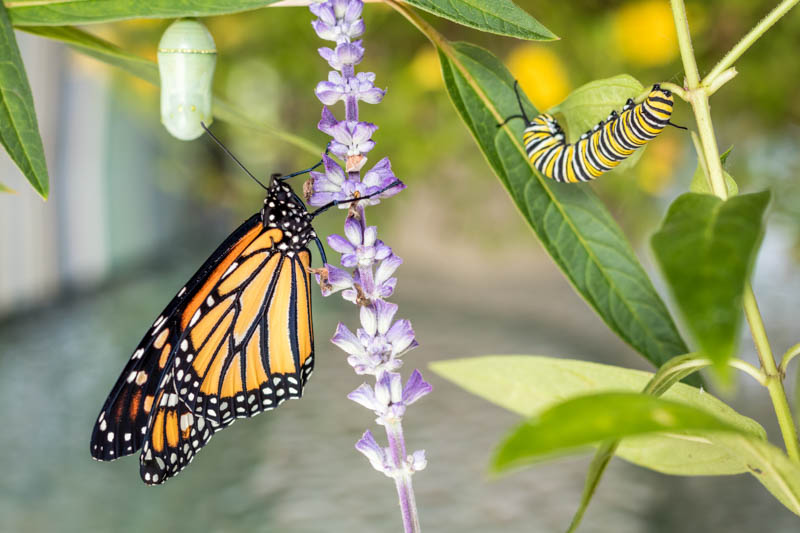 Monarch Trinity: Chrysalis, caterpillar and butterfly on milkweed
Monarch Trinity: Chrysalis, caterpillar and butterfly on milkweed
5 – Short Lifespan: Most adult butterflies live only for a few weeks, while others, like the Monarchs that migrate, can live up to nine months.
6 – Nectar and More: While butterflies are known for sipping nectar from flowers, some species also feed on tree sap, rotting fruit, and even animal dung.
7 – Sensory Overload: Butterflies taste with their feet, smell with their antennae, and see a spectrum of colors beyond human capabilities, including ultraviolet light.
8 – Incredible Vision: Their compound eyes consist of thousands of tiny lenses, allowing them to detect fast movements and providing a high-resolution view of their surroundings.
9 – Delicate yet Strong: Despite their delicate appearance, butterflies are quite resilient, capable of flying thousands of miles and navigating with incredible precision.
10 – Master of Camouflage: Many butterflies have evolved to have patterns on their wings that mimic their surroundings or other, more dangerous animals, helping them avoid predators.
11 – Symbiotic Relationships: Some species have developed mutualistic relationships with ants; the ants protect the butterfly larvae from predators, and in return, the larvae provide the ants with food.
12 – Vital Pollinators: Butterflies play an essential role in pollinating flowers, helping plants reproduce and contributing to the biodiversity of ecosystems.
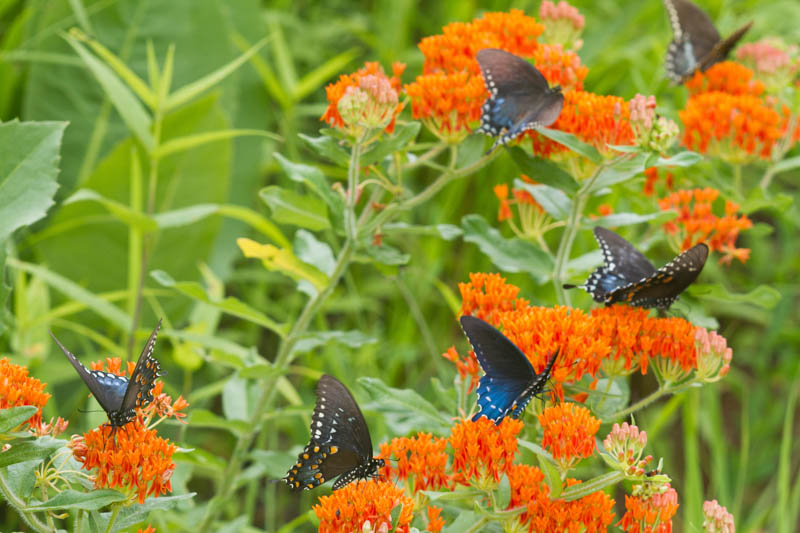 Pipevine Swallowtails (Battus philenor) on Butterfly Milkweed (Asclepias tuberosa)
Pipevine Swallowtails (Battus philenor) on Butterfly Milkweed (Asclepias tuberosa)
13 – Colorful Communication: The colors on a butterfly’s wings aren’t just for show; they can be used to attract mates, deter predators, or blend into their surroundings.
14 – Thermoregulation: Butterflies need to maintain a body temperature of about 85-100 degrees Fahrenheit to fly. They do this by basking in the sun and angling their wings to catch the sunlight.
15 – Picky Eaters: Butterfly caterpillars are often very particular about what they eat. Some species only feed on a single type of plant.
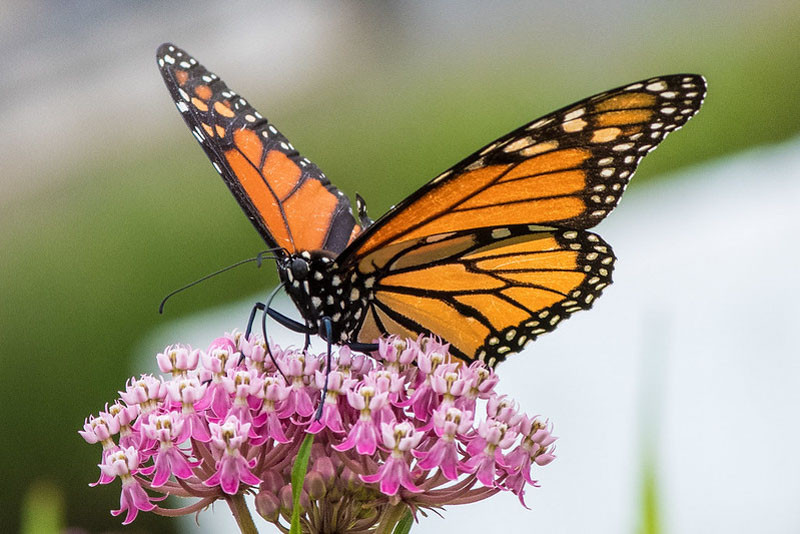 Monarch Butterfly on Milkweed (Asclepias)
Monarch Butterfly on Milkweed (Asclepias)
16 – Helpful to Humans: Butterflies are used in scientific research and environmental monitoring, serving as indicators of ecosystem health and biodiversity.
17 – Artistic Inspiration: Their beauty and grace have inspired artists, poets, and musicians for centuries, symbolizing transformation, renewal, and the fleeting nature of life.
18 – Protective Coloring: Some butterflies have “eyes” on their wings, which can startle or confuse predators, giving the butterfly a better chance of escaping.
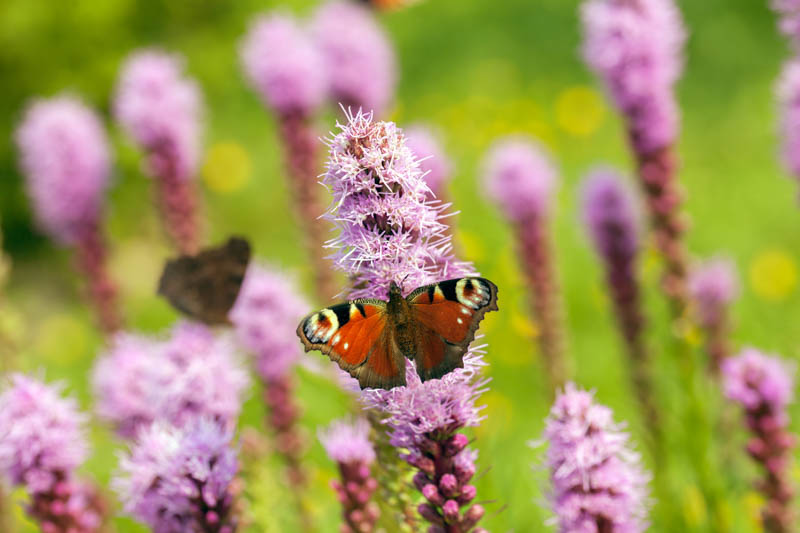
19 – Important in Culture: Butterflies are significant in many cultures, symbolizing the souls of the departed in some traditions and representing love and transformation in others.
20 – Natural Navigation: Butterflies are excellent navigators, using the sun’s position in the sky and their internal biological clocks to find their way during migration.
21 – Endangered Species: Many butterfly species are endangered due to habitat loss, pollution, and climate change. Conservation efforts are crucial to protecting these delicate creatures and the ecosystems they inhabit.
22 – Collecting Hobby: Butterfly collecting has been a popular hobby for centuries, with enthusiasts capturing, preserving, and displaying specimens from around the world.
23 – Unique Life Cycle: Unlike many insects, butterflies go through four distinct life stages: egg, larva (caterpillar), pupa (chrysalis), and adult.
24 – Champion Fliers: Some butterfly species (Skippers) are incredibly strong fliers, capable of reaching speeds up to 37 miles per hour.
25 – Environmental Indicators: Because butterflies are sensitive to environmental changes, their presence or absence can provide valuable information about the health of an ecosystem.
26 – Adaptation: Butterflies have adapted to survive in a wide variety of habitats, from deserts and mountains to rainforests and urban areas.
27 – Economic Impact: In some regions, butterfly tourism contributes significantly to the local economy, with people traveling from all over the world to witness mass butterfly migrations or visit butterfly conservatories.
28 – Intricate Patterns: The intricate patterns on butterfly wings are made up of thousands of tiny scales, each reflecting light in different ways to create the vibrant colors we see.
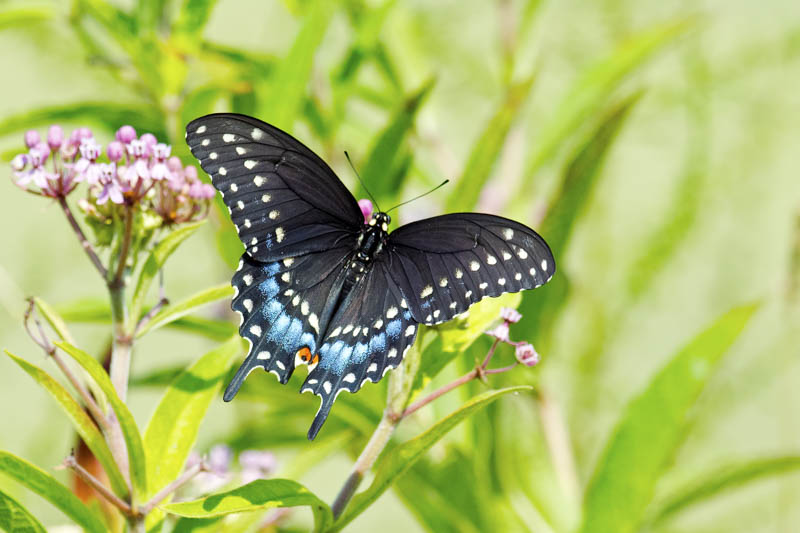
Black Swallowtail Butterfly
29 – Metamorphosis Mystery: The process of metamorphosis is still not fully understood, with scientists continuing to study how a caterpillar can transform into a butterfly in just a few weeks.
30 – Learning from Butterflies: Researchers are studying butterflies to learn more about flight, navigation, and other areas that could have applications in science and technology.
These incredible insects continue to captivate and inspire, reminding us of the beauty and complexity of the natural world. Their diverse species, intricate life cycles, and vital roles in ecosystems make them a subject of fascination and importance for scientists, conservationists, and butterfly enthusiasts alike.
Create a membership account to save your garden designs and to view them on any device.
Becoming a contributing member of Gardenia is easy and can be done in just a few minutes. If you provide us with your name, email address and the payment of a modest $25 annual membership fee, you will become a full member, enabling you to design and save up to 25 of your garden design ideas.
Join now and start creating your dream garden!
Create a membership account to save your garden designs and to view them on any device.
Becoming a contributing member of Gardenia is easy and can be done in just a few minutes. If you provide us with your name, email address and the payment of a modest $25 annual membership fee, you will become a full member, enabling you to design and save up to 25 of your garden design ideas.
Join now and start creating your dream garden!